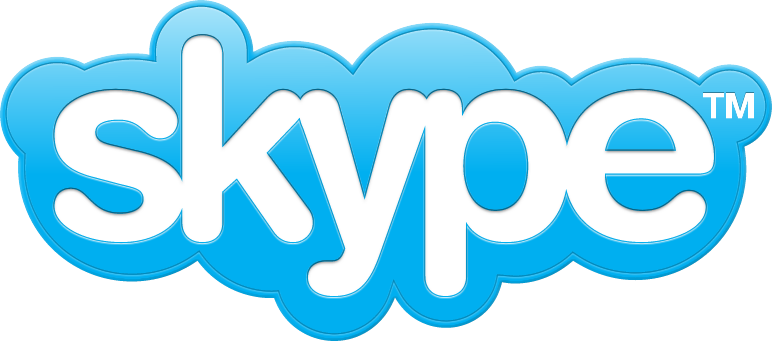Communication Tools
Instant Messaging, Video and Phone Conferences
As the introduction of WEB 2.0 platform is the latest wave in computer-mediated communication technology (Harrison M.T, Barthel B., 2009), there are many communication tools that support knowledge sharing and are part of communities of practice (Wenger, E., White, N., Smith, J., 2009).
-
 is a proprietary voice-over-Internet Protocol (VoIP) service and software application founded in 2003. The service allows users to communicate with peers by voice, video, and instant messaging over the Internet.
is a proprietary voice-over-Internet Protocol (VoIP) service and software application founded in 2003. The service allows users to communicate with peers by voice, video, and instant messaging over the Internet.
-
 is a social networking service launched in February 2004. A messaging system that is available to all of the website's users, combines text messaging, instant messaging, emails, and regular messages.Users can create profiles with photos, lists of personal interests, contact information, and other personal information. Users can communicate with friends and other users through private or public messages and a chat feature. They can also create and join interest groups and "like pages". Facebook enables users to choose their own privacy settings and choose who can see specific parts of their profile. The website is free to users.
is a social networking service launched in February 2004. A messaging system that is available to all of the website's users, combines text messaging, instant messaging, emails, and regular messages.Users can create profiles with photos, lists of personal interests, contact information, and other personal information. Users can communicate with friends and other users through private or public messages and a chat feature. They can also create and join interest groups and "like pages". Facebook enables users to choose their own privacy settings and choose who can see specific parts of their profile. The website is free to users.
One of the most popular applications on Facebook is the Photos application, where users can upload albums and photos. Facebook allows users to upload an unlimited number of photos, compared with other image hosting services such as Flickr, which apply limits to the number of photos that a user is allowed to upload. During the first years, Facebook users were limited to 60 photos per album. Since April 2011 Facebook users have had the ability to make live voice calls via Facebook Chat, allowing users to chat with others from all over the world. This feature, which is provided free through T-Mobile's new Bobsled service, lets the user add voice to the current Facebook Chat as well as leave voice messages on Facebook. On July 6, 2011, Facebook launched its video calling services using Skype as its technology partner. It allows one to one calling using a Skype Rest API. Facebook is expanding its group file sharing features to give all groups the ability share files between members Documents within a group, and it can be public or available to members-only based on the original privacy setting of the group. Public groups cannot make individual files members-only without making the entire group “closed” or “private.” (Wikipedia, 2012)
-
 was released in 2001 and upgraded in 2004, but it's development has stopped. It has a variety of features, such as instant messaging, presence awareness, support for Session Initiation Protocol(SIP), file transfer, application sharing and whiteboarding.
was released in 2001 and upgraded in 2004, but it's development has stopped. It has a variety of features, such as instant messaging, presence awareness, support for Session Initiation Protocol(SIP), file transfer, application sharing and whiteboarding.
-
 is an advertisement-supported instant messaging client and associated protocol provided by Yahoo!. Besides instant messaging it has file sharing and voicemail possibilities.
is an advertisement-supported instant messaging client and associated protocol provided by Yahoo!. Besides instant messaging it has file sharing and voicemail possibilities.
-
 is an instant messaging service that provides both text and voice communication. As Google Talk servers communicate with clients using an open protocol, XMPP, the service can also be accessed using any other client that supports XMPP.
is an instant messaging service that provides both text and voice communication. As Google Talk servers communicate with clients using an open protocol, XMPP, the service can also be accessed using any other client that supports XMPP.
-
 is a proprietary multiprotocol instant messaging application for various oparation systems. It can also connect to multiple instant messaging services like ICQ, Windows Live Messenger, XMPP and Skype netwoorks.
is a proprietary multiprotocol instant messaging application for various oparation systems. It can also connect to multiple instant messaging services like ICQ, Windows Live Messenger, XMPP and Skype netwoorks.
References
Harrison M.T, Barthel B. (2009) Wielding new media in Web 2.0: exploring the history of engagement with the collaborative construction of media products. SAGE Publications.
Wenger, E., White, N., Smith, J., (2009). Digital Habitats: Stewarding Technology for Communities. Portland: CPSquare.
Wikipedia. (2012). Facebook. http://en.wikipedia.org/wiki/Facebook (Accessed: 15.10.2012)
 In English
In English Suomeksi
Suomeksi




